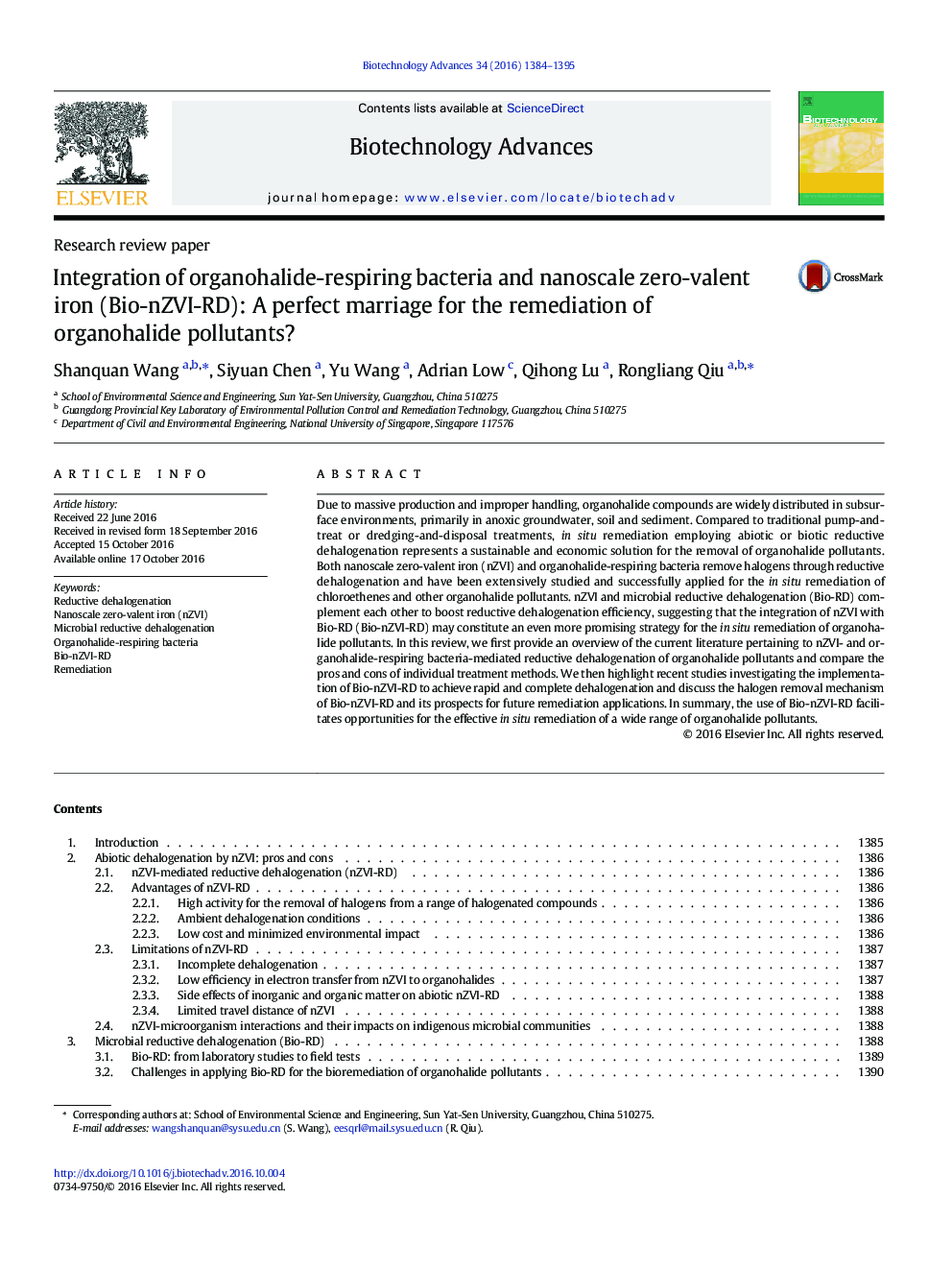| Article ID | Journal | Published Year | Pages | File Type |
|---|---|---|---|---|
| 6451195 | Biotechnology Advances | 2016 | 12 Pages |
Due to massive production and improper handling, organohalide compounds are widely distributed in subsurface environments, primarily in anoxic groundwater, soil and sediment. Compared to traditional pump-and-treat or dredging-and-disposal treatments, in situ remediation employing abiotic or biotic reductive dehalogenation represents a sustainable and economic solution for the removal of organohalide pollutants. Both nanoscale zero-valent iron (nZVI) and organohalide-respiring bacteria remove halogens through reductive dehalogenation and have been extensively studied and successfully applied for the in situ remediation of chloroethenes and other organohalide pollutants. nZVI and microbial reductive dehalogenation (Bio-RD) complement each other to boost reductive dehalogenation efficiency, suggesting that the integration of nZVI with Bio-RD (Bio-nZVI-RD) may constitute an even more promising strategy for the in situ remediation of organohalide pollutants. In this review, we first provide an overview of the current literature pertaining to nZVI- and organohalide-respiring bacteria-mediated reductive dehalogenation of organohalide pollutants and compare the pros and cons of individual treatment methods. We then highlight recent studies investigating the implementation of Bio-nZVI-RD to achieve rapid and complete dehalogenation and discuss the halogen removal mechanism of Bio-nZVI-RD and its prospects for future remediation applications. In summary, the use of Bio-nZVI-RD facilitates opportunities for the effective in situ remediation of a wide range of organohalide pollutants.
